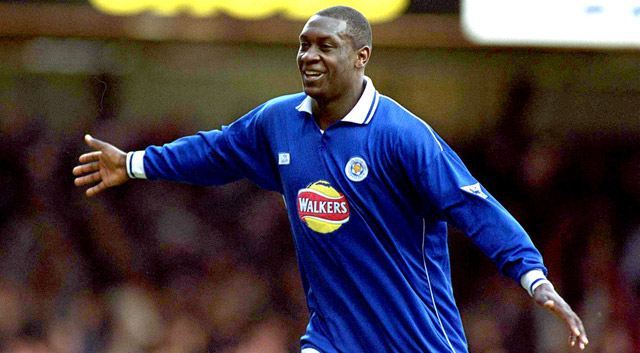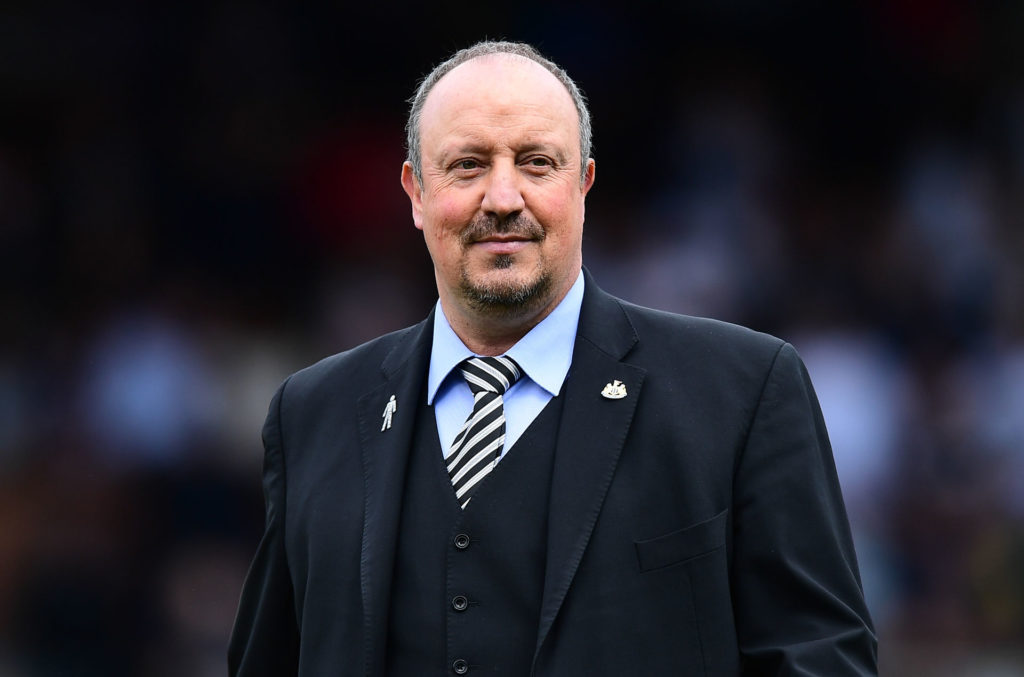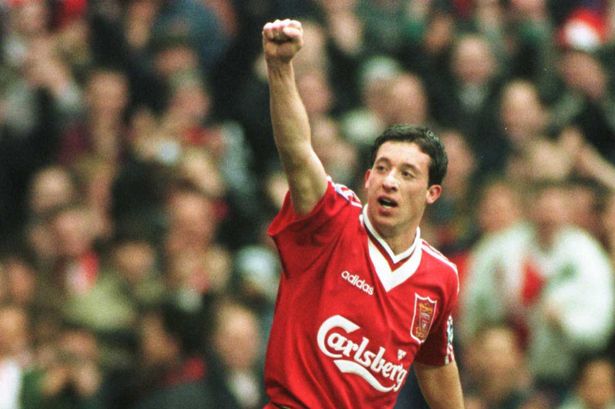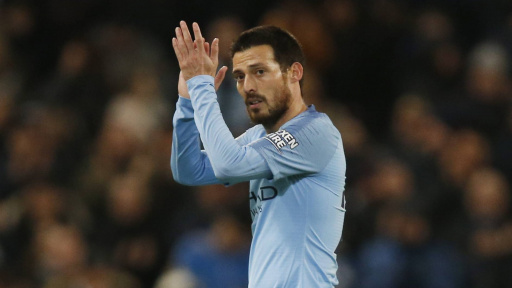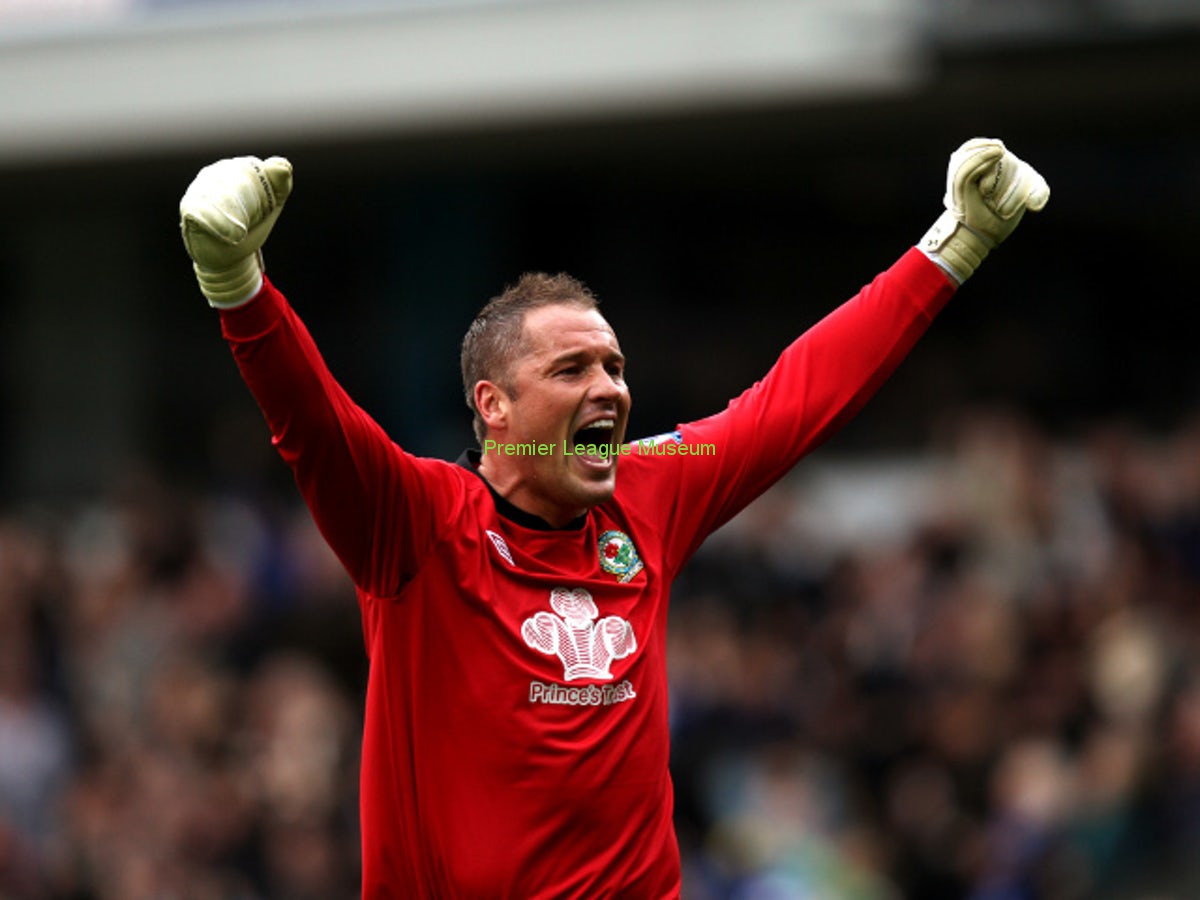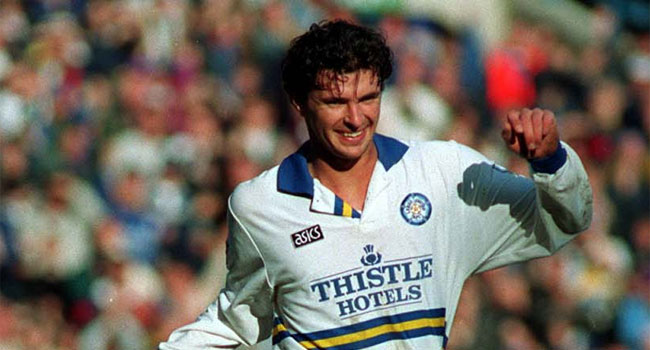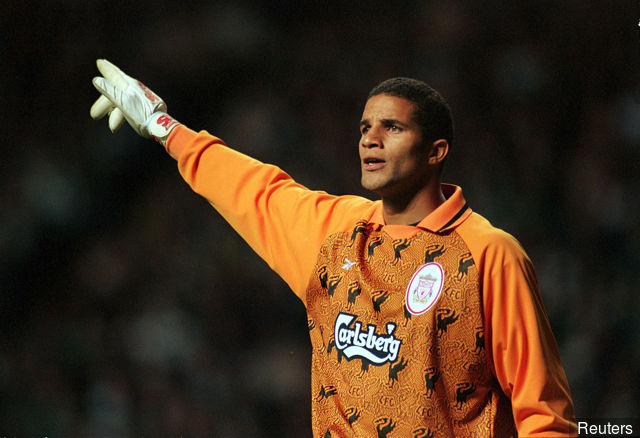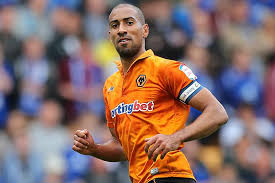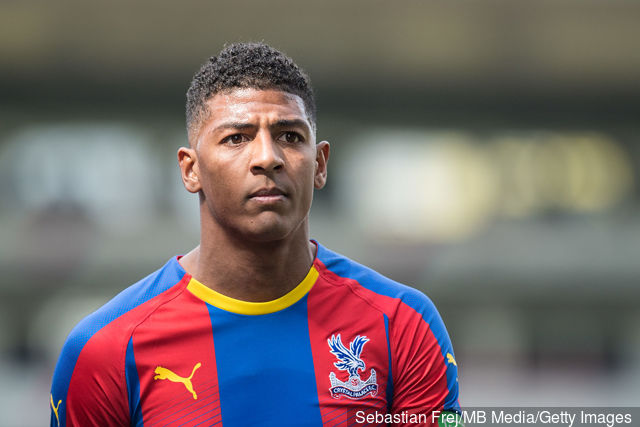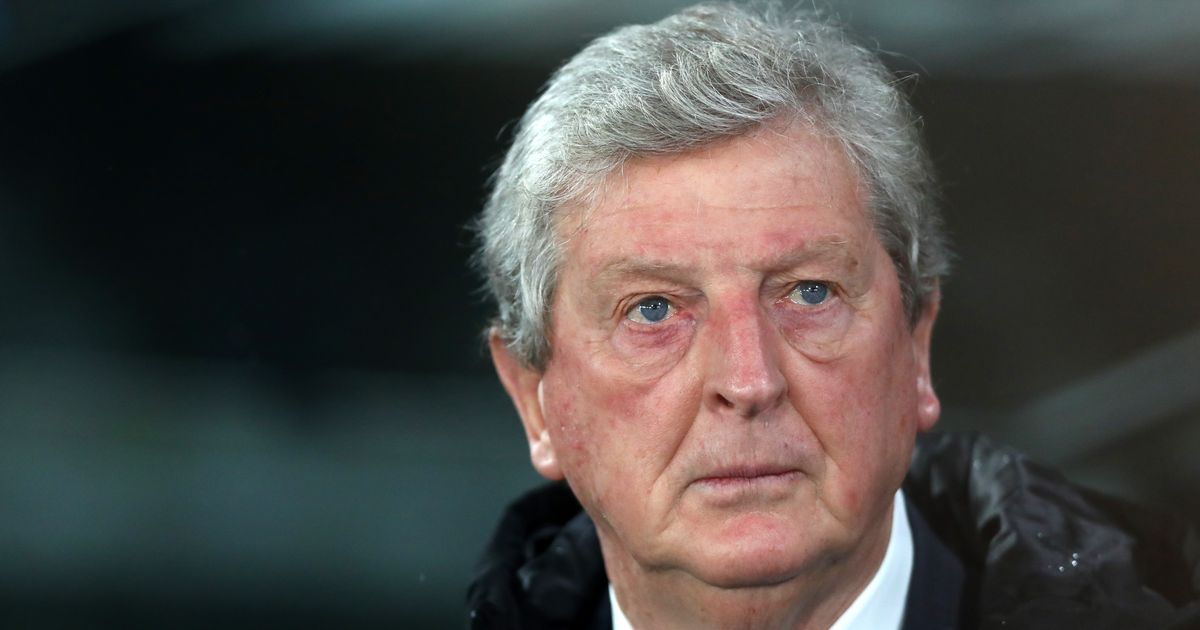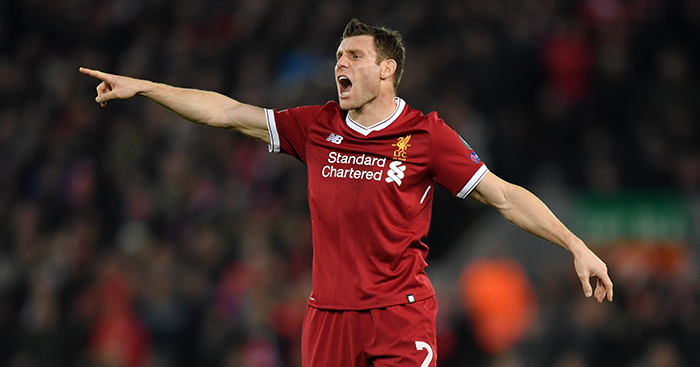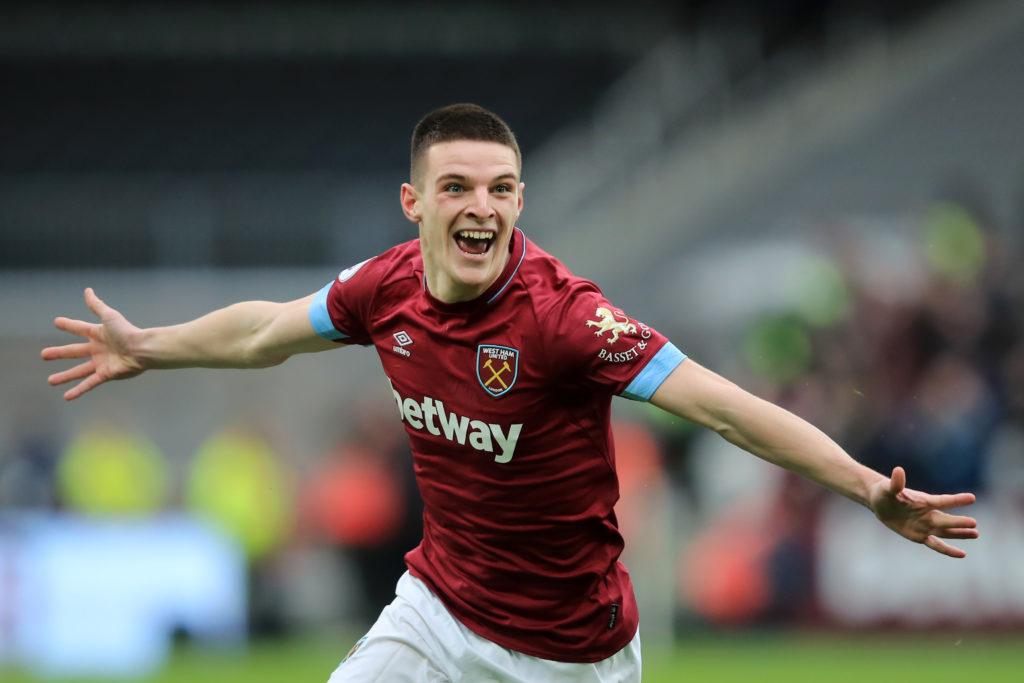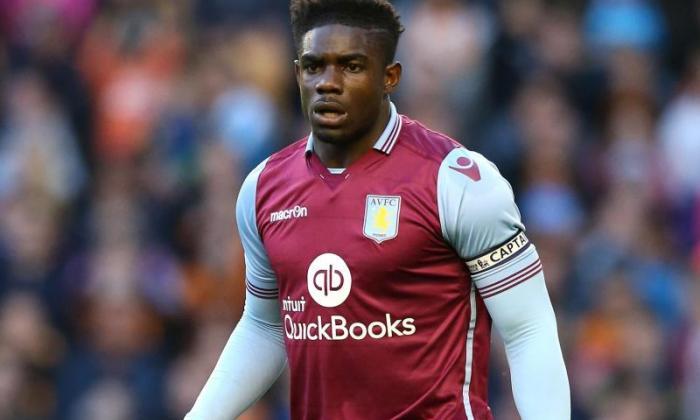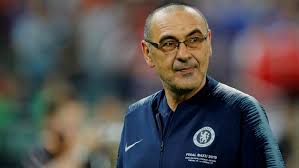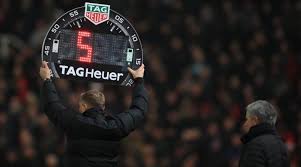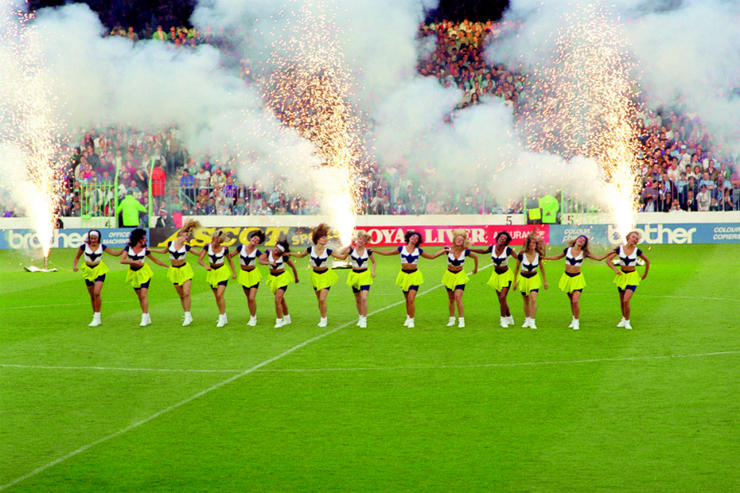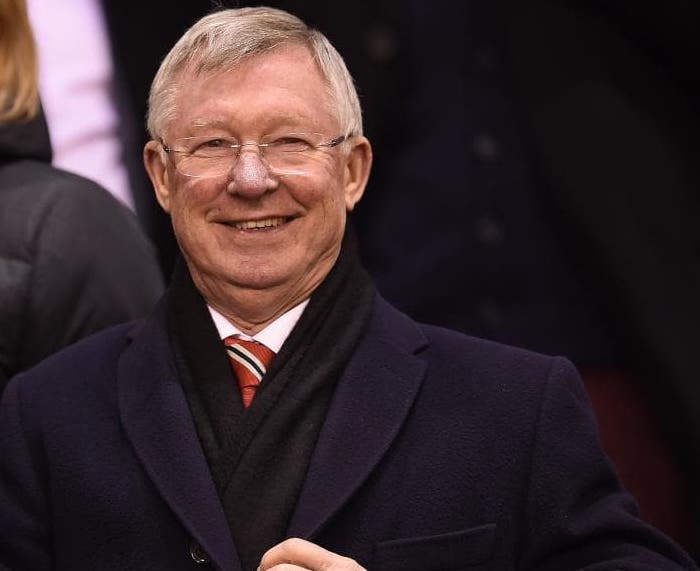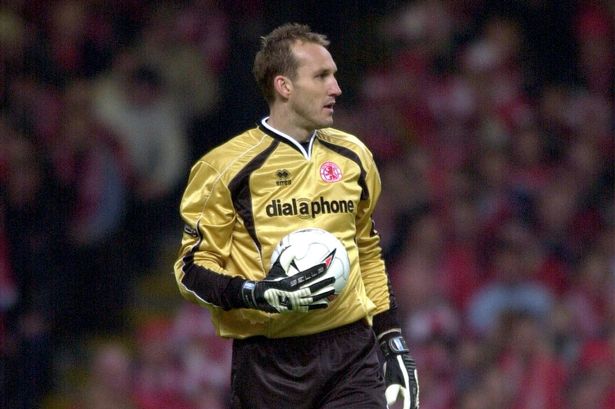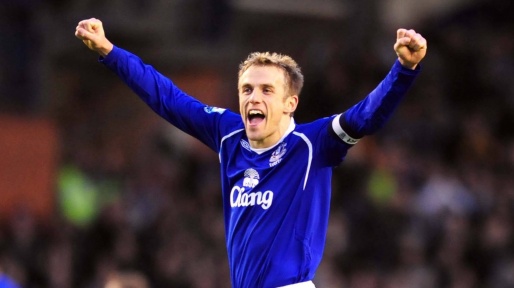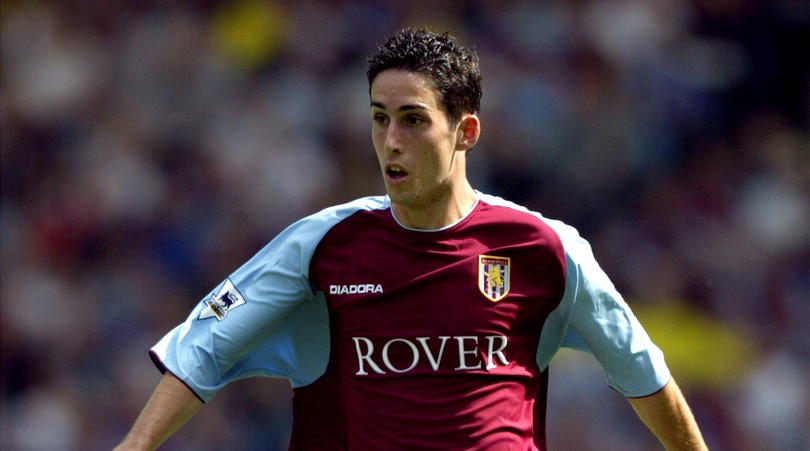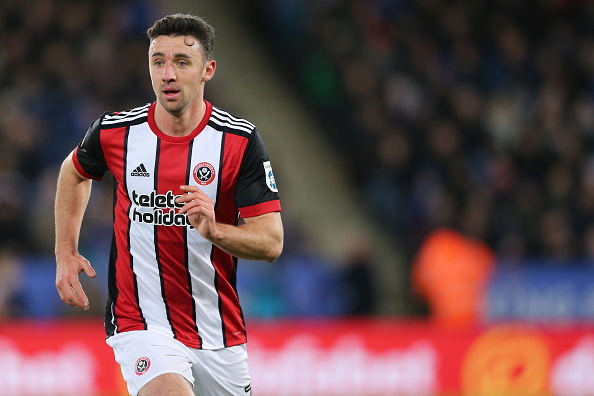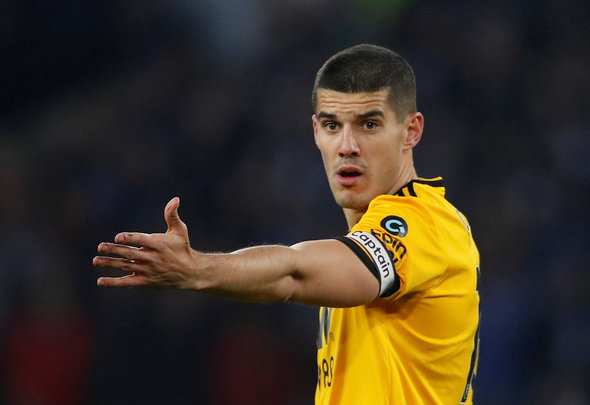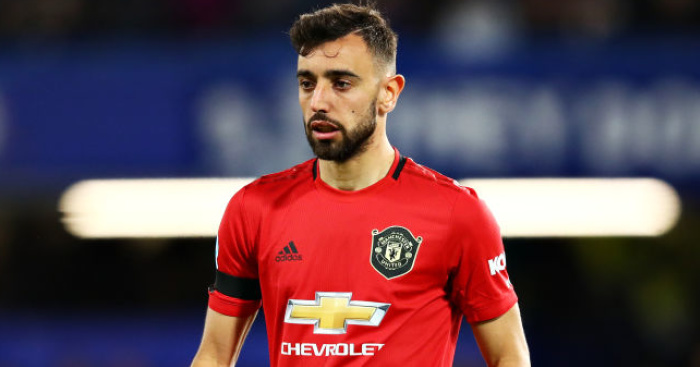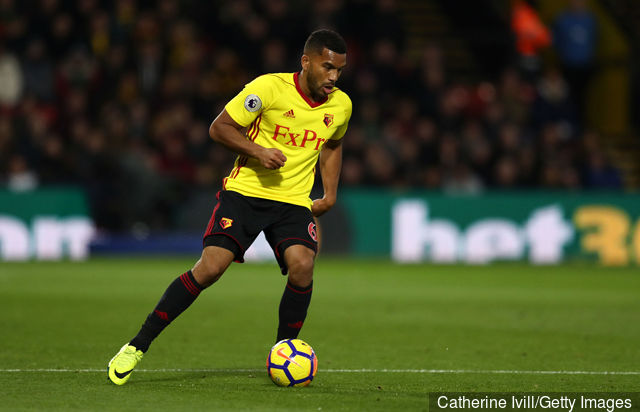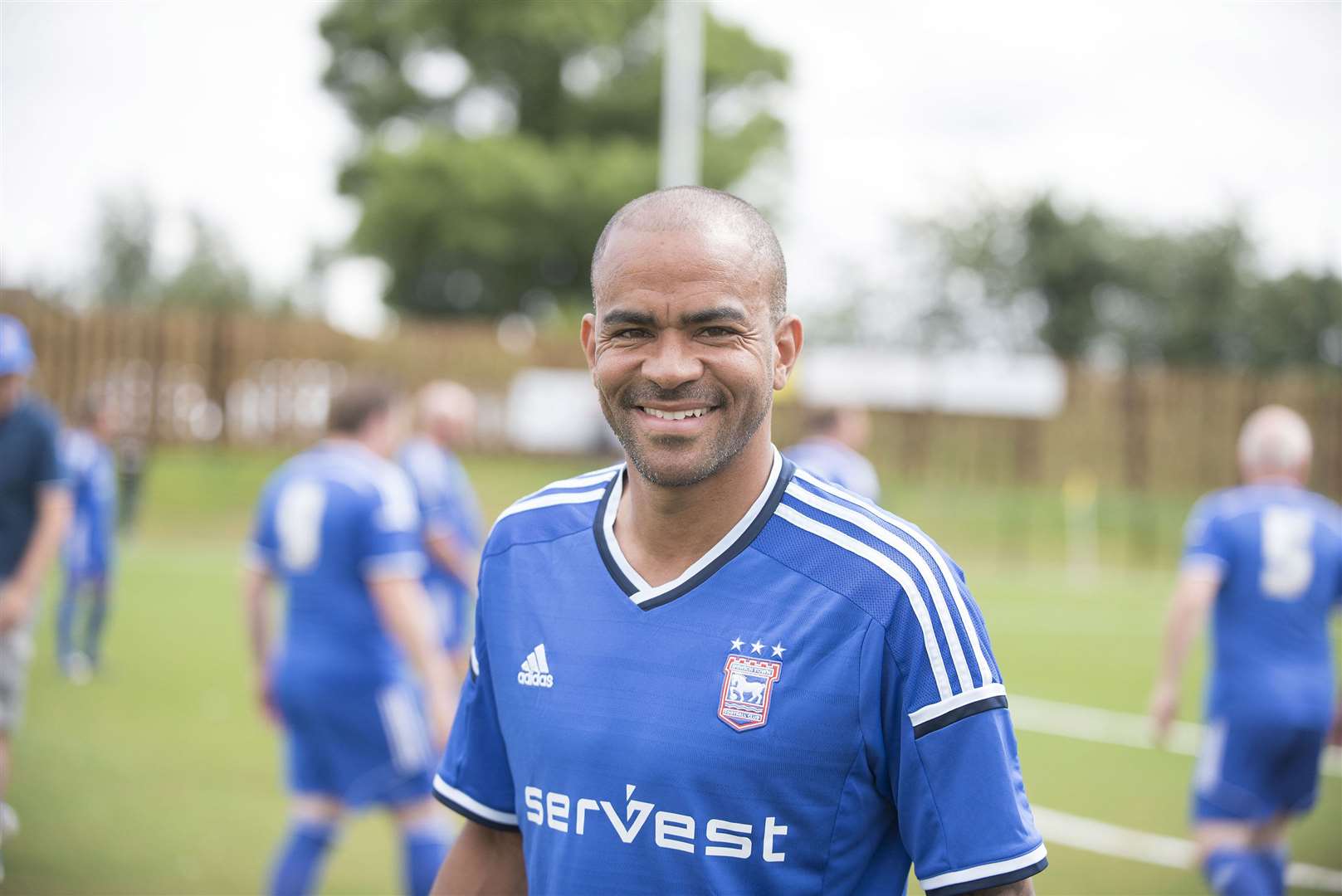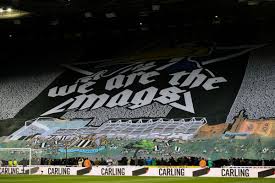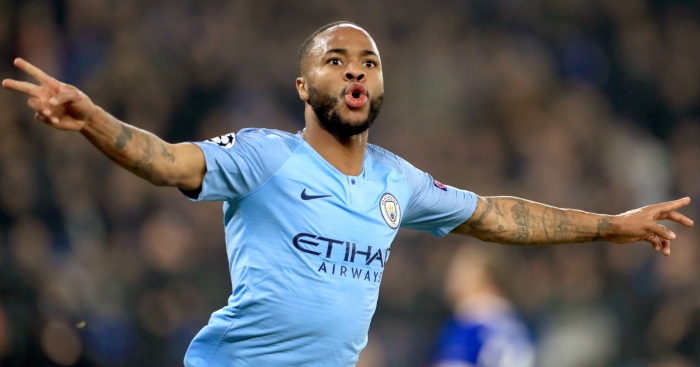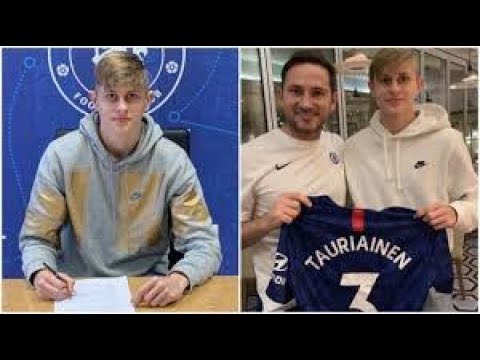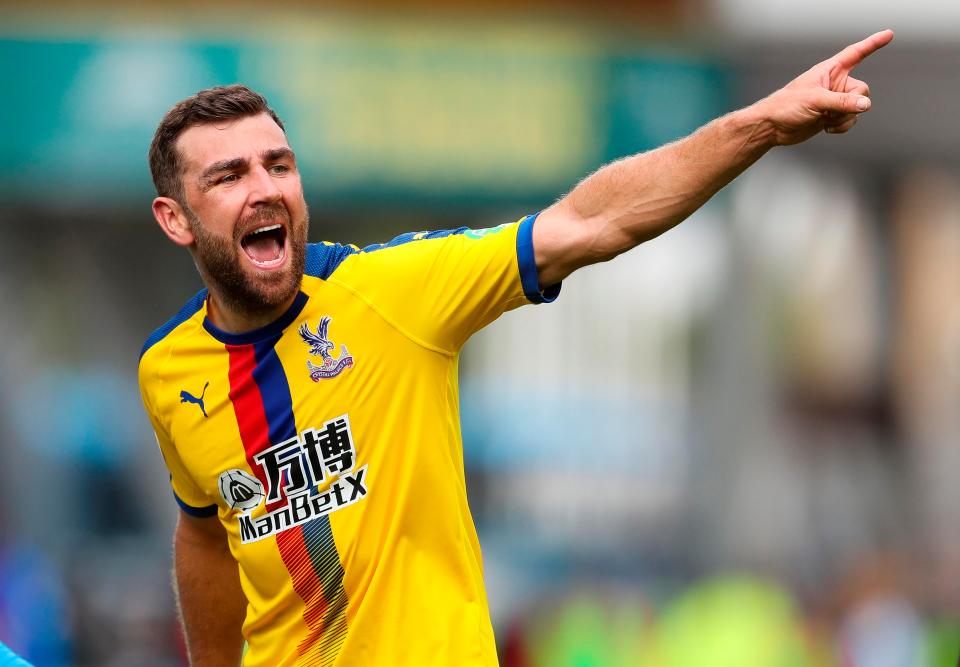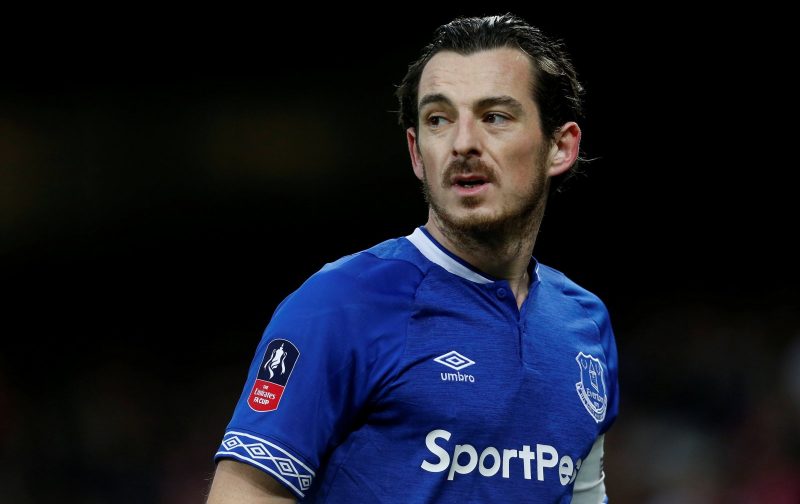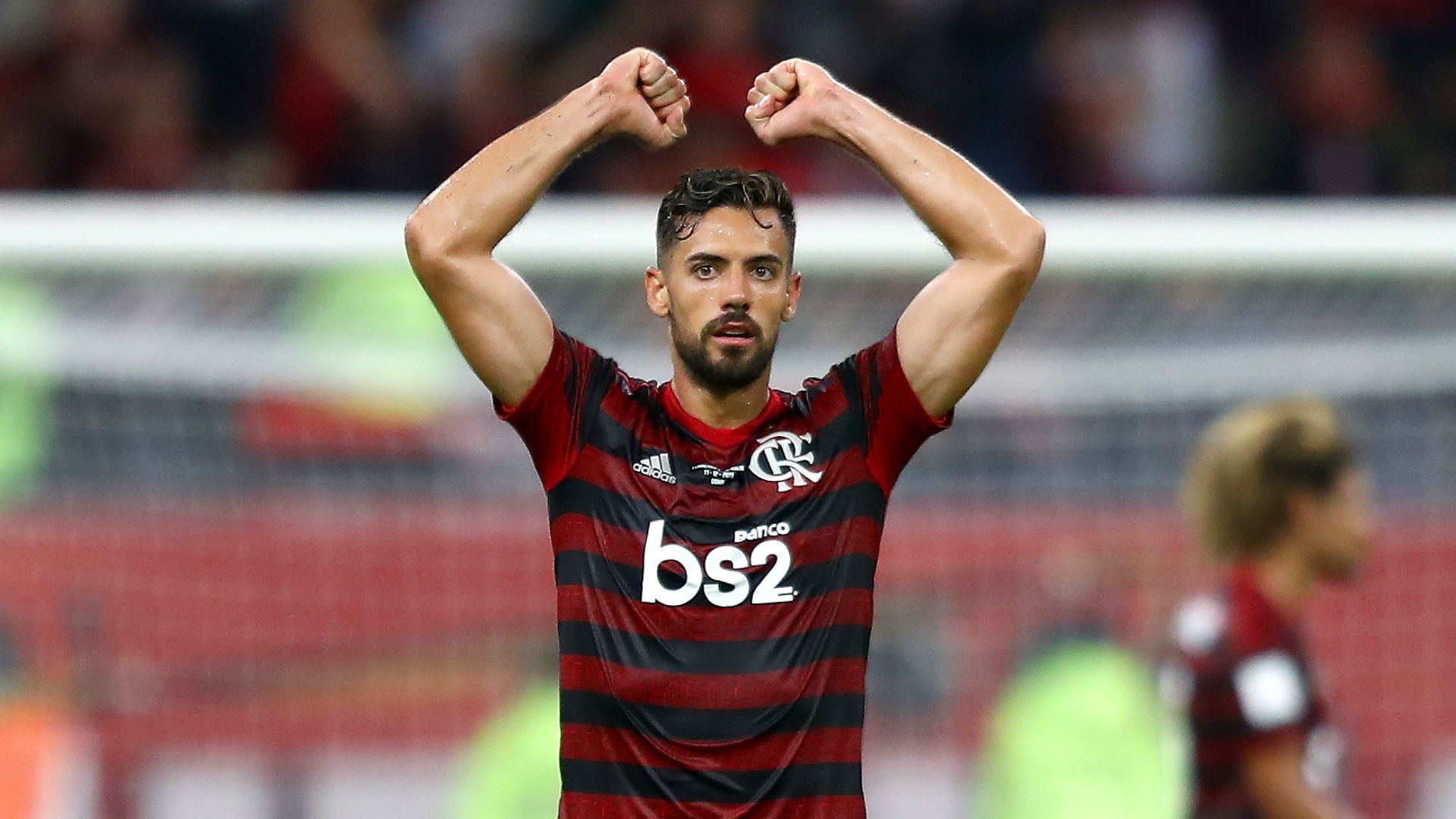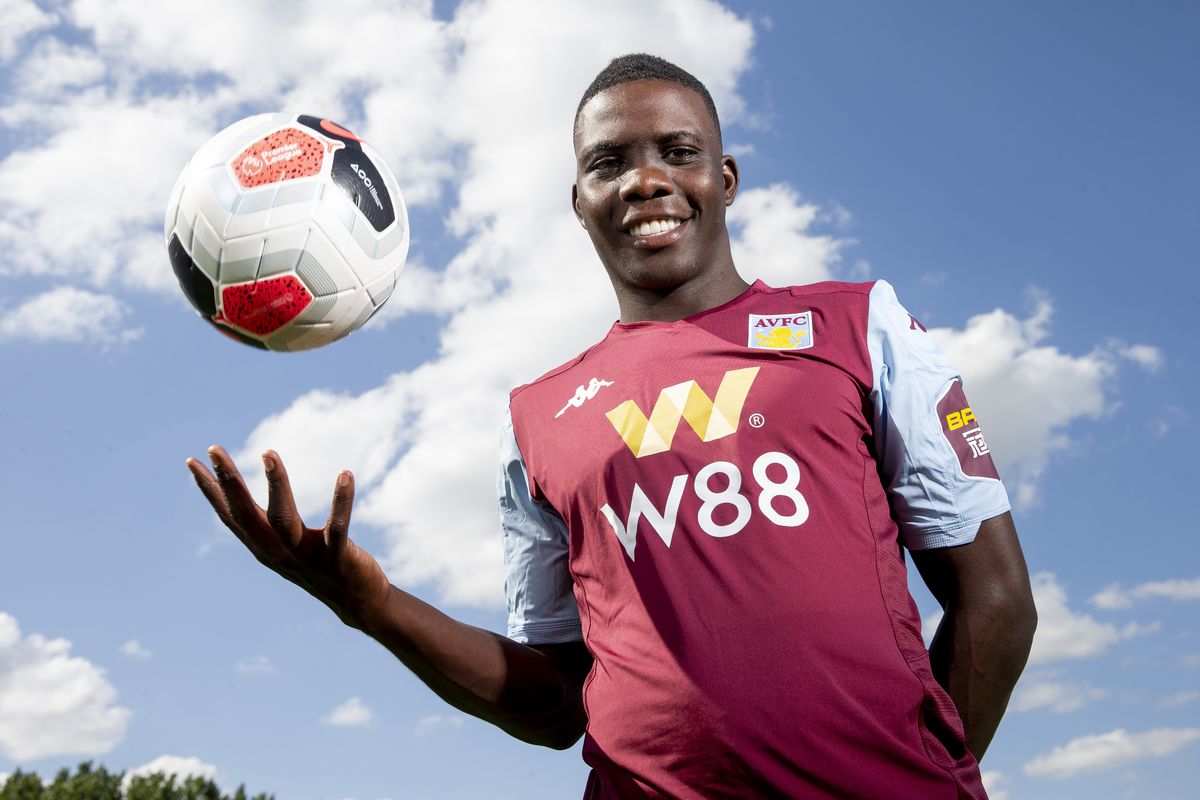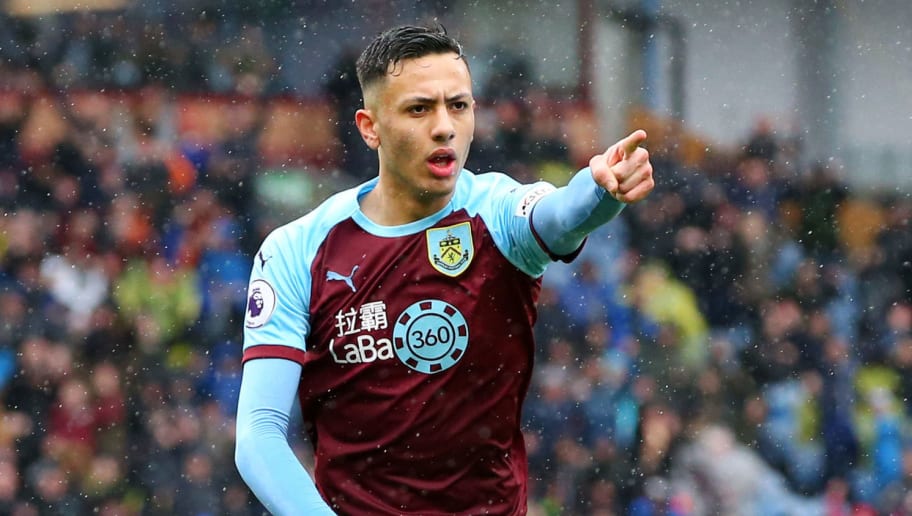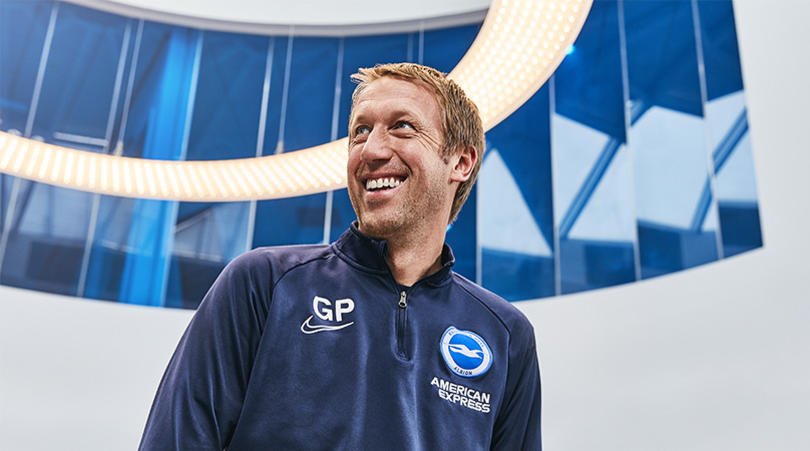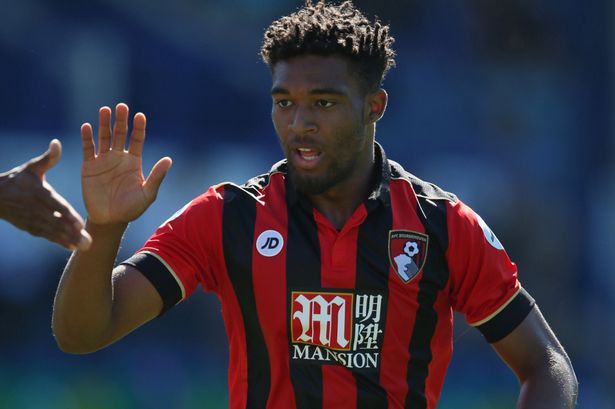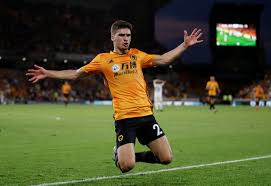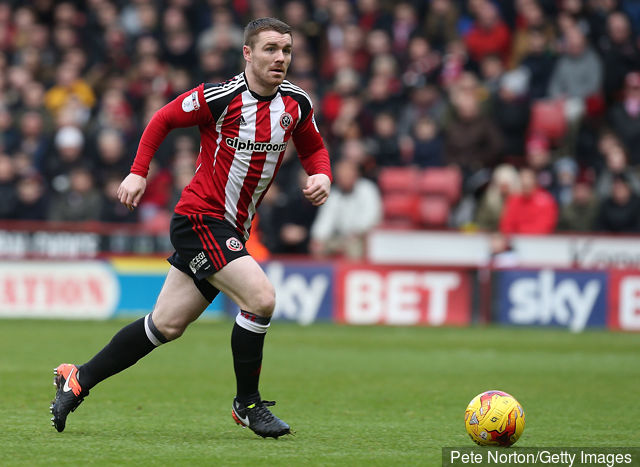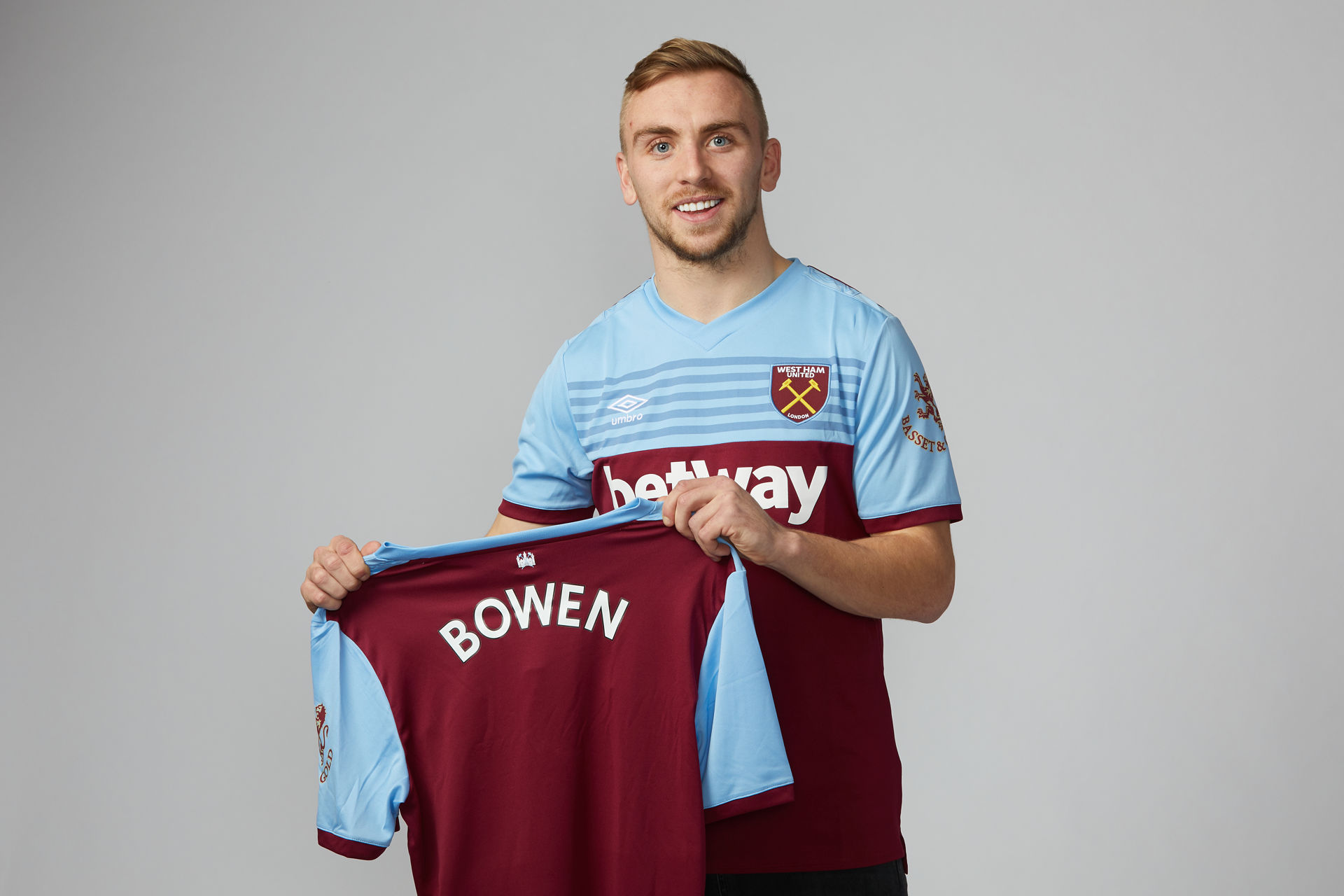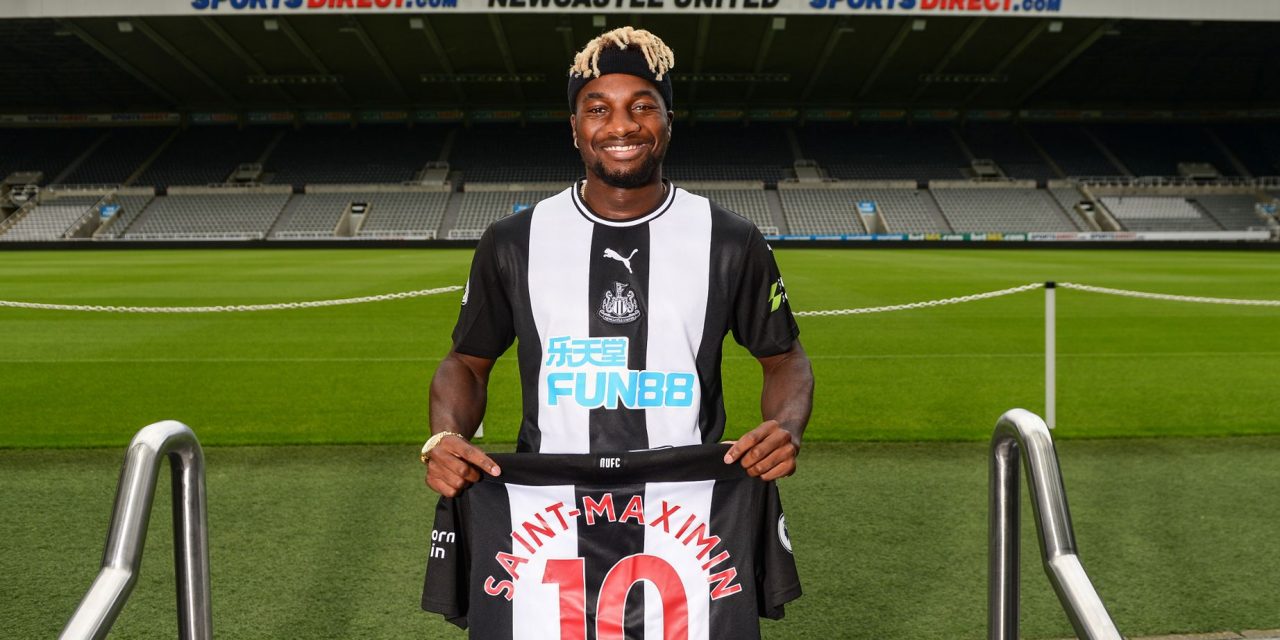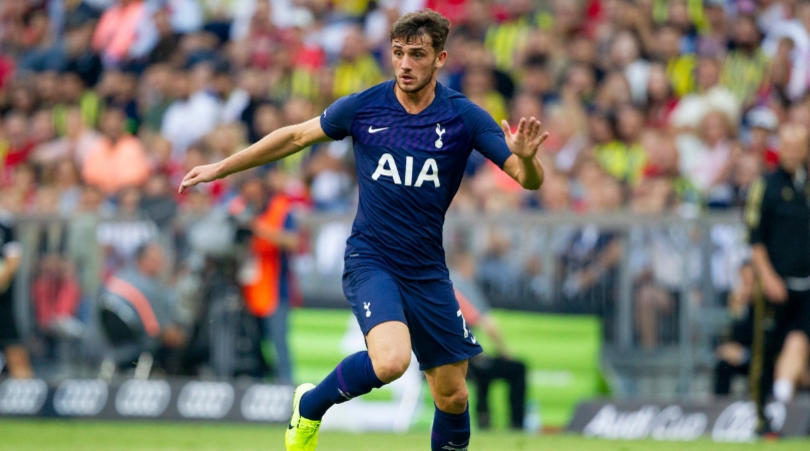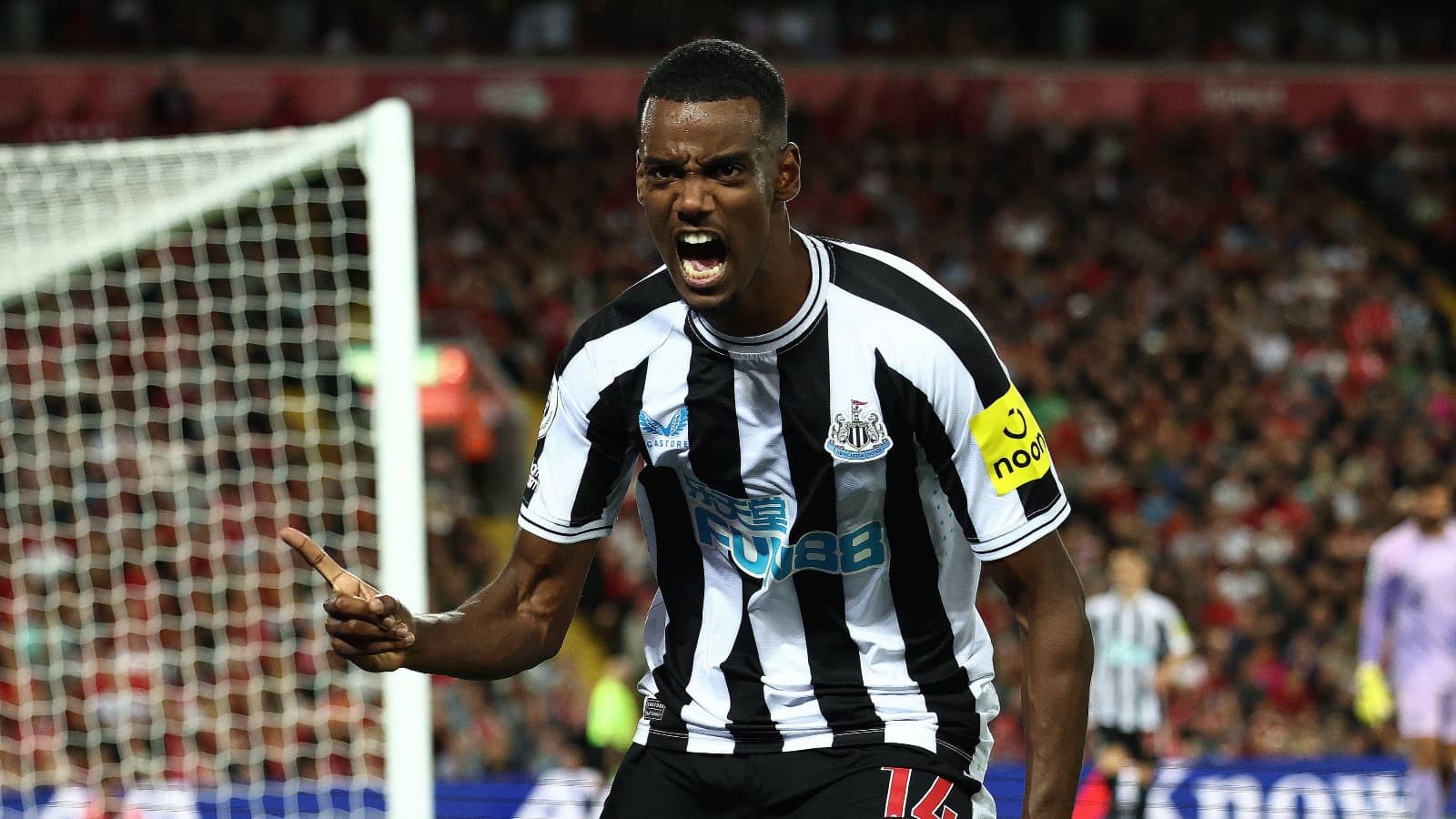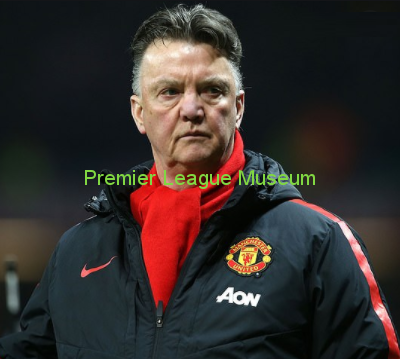Strikers these days have turned into absolute poachers who have trained enough to bury the ball past anyone, anything, even past Typhon, the most fearsome Greek monster. The metamorphosed versions of these ball killers can give Kafkaesque nightmares to the defenders. In many ways, the modern day forwards are adapting to do more than just free goalscoring.
While the strikers in the 80’s and 90’s had the job of just darting the ball into the net, it was the late 90’s and the 2000 that saw the number nines do more than just goalscoring. Coaches and master tacticians realized that the striker’s position was unexploited and a lot of alterations can be made to the position. In many ways, the managers of that time made several key modifications to the forward role. One of the fundamental amendments made to the striker role was to involve the number nine in the play and give him more duties in building the attack.
One of the players to mutate and develop this new strand of abilities to building the attack was Emile Heskey. Emile Heskey was never considered to be a free goal scorer and his goalscoring numbers attest the notion. However, what no other statistic can showcase is his ability to link up with the rest of the players and build the attack.
The Englishman has borne the brunt of more slings and arrows than almost any other English player this century. He had been blamed for the Liverpool and England downfall. Heskey was labeled a lumbering beast who couldn’t hit a barn door if he stood right next to it and even though he was surrounded by Eriksson-era England’s preening celebrities he somehow managed to get blamed for the failure of that team to do anything but get knocked out of a quarter-final penalty competition.
Some of the arguments may be valid when it came to his lack of goals and missing sitters in front of goal but to have his pride smeared during his early twenties for simply being a “work in progress” was too harsh on Emile Heskey. Perhaps, in the midst of all this, his talents of being an excellent link-up player, making the other team players look good went unnoticed. A striker with these set of qualities was recherché in those days. Heskey’s lack of goalscoring was often misjudged and he was wrongly criticized on multiple occasions. This doesn’t stop us on re-living his vivid yet a journey full of ups and downs.
Where it all began..
The Leicester born striker had developed a liking for the beautiful game since a very young age and played for local youth team Ratby Groby Juniors. Out smarting and overpowering his peers, he joined Leciester City academy at the age of nine. After spending nearly 7 years in the youth system, he was handed out his first team debut at Leicester while still being in the Leicester academy. He made his debut on 8th March 1994 against Queens Park Rangers. Leicester City got relegated from the top flight at the end of the 1994-95 season.
The 1995-96 season was monumental for the 17 year old as he signed his first professional contract with the Foxes.
Emile Heskey caught the eye of many since the start of the season and citing his upward growth, the powerfully-built striker did enough to suggest that here was a player with a big future. By the end of the 1995-96 season the youngster had become a first-team regular and City had returned to the top-flight thanks to a play-off victory over Crystal Palace. Heskey’s first goal as a senior professional for the Foxes came in a 1-0 win at Norwich City and he added a further six goals during the remainder of the campaign.
The young striker – affectionately known as ‘Bruno’ for his likeness to the popular heavyweight boxer – played a big part in Leicester’s splendid return to the Premiership.
His talent continued to blossom under the tutelage of Leicester’s inspirational manager Martin O’Neill and the muscular hitman was proving to be a handful for the best of defences.
A legendary career..
Life looked bright for Bruno. In 1996-97 season, His 10 goals in 35 League games was a reasonable return for a first season of top flight football but it was in the Coca-Cola Cup Final that Heskey scored his most important goal. With City 1-0 down, and just two minutes of the extra thirty remaining, the striker bundled the ball home from close range to earn Leicester a replay which they went on to win 1-0. City finished the season in a highly respectable ninth place and that Coca-Cola Cup victory meant a return to European competition for the first time since 1961-62 and the Englishman had played a big part to make it possible. Citing his brilliant overall season, he was one of the favorites to win the PFA young player of the year award but finished second just behind hotshot David Beckham.
As Emile Heskey’s performances continued to improve it was obvious that the bigger clubs would come calling and, sure enough, Leeds United and Tottenham reportedly started showing an interest.
To Heskey’s credit he was happy to stay at his local club, he was Leicester born and bred and had attended the same school as Gary Lineker and learn his trade.
The big man scored ten League goals again in the 1997-98 season but the following campaign yielded a poor return of just six strikes as each time Leicester finished in 10th place. This was the first critical point where his goalscoring was questioned and soon a chain of disapprovals followed. The detractors argued that Emile simply did not score enough goals throughout the season to be rated as a top-quality player, and that he was went down far too easily for someone of such a strong construction. It’s fair to say that Heskey’s scoring rate could have been better but his contribution in other areas should not be overlooked. His muscular presence and blinding speed terrified life of many defenders and allowed others to reap the benefits, Tony Cottee for instance.
Manager Martin O’Neill recognized Bruno’s potential to support the other forward and used this aspect to revive Tony Cottee. Cottee had been brought back to English football by O’Neill and after initially struggling to command a regular place he forged a fine big man-little man partnership with Heskey. Cottee’s career at the top level had appeared to be over but Emile’s unselfish play allowed him to prosper and enjoy some of his best years in the game well into his thirties. Emile Heskey would be crowned a League Cup champion again in 2000 as Leicester defeated Tranmere Rovers.
The 1999-2000 season was to be Heskey’s last at the Filbert street as he decided the time had now come to make the move to a bigger club. His destination was Liverpool, the team he had supported as a boy, with the Anfield outfit paying what, at the time, was the third highest fee for a Premiership player of £11 million.
Liverpool manager Gerard Houllier was full of praise for his first home-grown signing but already insisted that the £11m striker is “not the finished product”. While the burly striker was undeniably gifted, there are those who claimed that the fee was an insane gamble for a 22-year-old who wasn’t even among the top 15 goal-scorers in the premiership. However, Houllier had a different perspective to this. The boss knew that Heskey and his pet wonderboy, Michael Owen were teammates in the U21 England side and were formidable partners. Heskey would add a different dimension to Liverpool, adding the lethal bite to the Liverpool strike force, and complementing the pacey play of Owen and Robbie Fowler. He made his Liverpool debut against Sunderland on March 11, 2000. However, his first goal in front of the Kop came on April 1 against Coventry City. Bruno ended with 3 goals in 12 outings in the Red shirt.
The 2000-01 season was remarkable for Liverpool and for every player in the squad. The Merseysiders won the UEFA Cup, League Cup and the FA Cup. Heskey maximized his lethality rate while also assisting fellow teammate Michael Owen reach greater heights. The former Leicester man finished with a career high of 22 goals in the season. This was the season where Heskey won the support of the Kop.
Jamie Carragher has some fascinating insights into playing with Heskey and gives an valuable reminder to any fans who might have forgotten that Heskey was an imperious striker with the full backing of the Kop for a period of about two years. Carragher mentions a Liverpool game lost to Ipswich in which Heskey was rested. The Kop almost rioted afterwards as fans wanted to know why big Emile wasn’t chosen. Heskey played a crucial role in helping the Reds lift all the three trophies that season. Liverpool lifted the League Cup on 25th February 2001, winning the final against Birmingham City on penalties after a 1-1 tie after extra time. Liverpool showed the cutting edge in the 29th minute to break the deadlock, courtesy of a brilliant strike by Fowler. Liverpool took the straight route to goal, with the long clearance of Stephane Henchoz knocked on by Emile Heskey for Fowler to achieve an instant finish over Birmingham goalkeeper.
Heskey was able to win three medals at Liverpool in his first full season at Anfield. This was the promise that more was to come in upcoming years from the muscular forward. For the time being he had silenced his critics of being a lazy goal scorer but doubts would seemingly reappear soon. The following season was a poor return of expectations that the club supporters and pundits had from him as he only managed 9 goals in 51 appearances. However, Heskey managed to add another medal to his shelf as the Reds beat rivals Manchester United 2-0 to lift the League Cup. There was a word on the street in December 2002 that Spurs are inching closer to the burly striker and are ready to offer £12 million to Liverpool. However, despite the pitiable track record of goals, Houllier insisted that Heskey would remain at Liverpool. It was clear that the low goal to game ratio was going to cost Heskey at some point of time and signs of the first break started to appear in the 2003-04 season.
Emile Heskey faced immense competition from Milan Baros for the starting role and eventually lost the battle as Milan improved to be a more reliable option in the final third.
An injury to Baros was the only reason that saw Emile facilitate a return to the starting line up as he ended the season with 12 goals. Heskey made the decision to leave Liverpool and signed for Birmingham City at the end of the 2003-04 season for a fee of £3.5 million that could rise to £6.25 million. He finally drew curtains to his Liverpool career, where he was duly recognized for not only his striking talents but also unselfish style of play. The Kop truly loved him as some of his goals were key to Liverpool’s progress to glory.
More crucial than the goals, though, was the role Heskey was asked to play. Nevertheless, the position Heskey was called upon to play was more important than the goals. Robbie Fowler, Jari Litmanen, Wayne Rooney: any number of strikers benefited from having Heskey alongside them but it was Michael Owen who really reaped the rewards, picking up the Ballon d’Or in 2001 after a season in which Heskey’s build-up play was an integral part of his club and country success and in which he scored 22 goals himself. Owen was never more potent than when he was with Heskey.
Expectations were huge as Emile Heskey had recently become the most expensive Birmingham City player. However, injuries put him off the track for a considerable amount of time in the first half of the season. Despite that he bounced back and produced some all round displays and ended the season with 11 goals, most man of the match awards at St. Andrew’s and the Birmingham City player of the year. The 2005-06 season was a disaster for Birmingham as well as Emile Heskey. His goal rate drastically dropped, managing to score only four goals throughout the season. Shambles in the strike force dealt a major blow in Birmingham’s survival hopes as impotency in the attack was one of the prime reasons for the Blues succumbing to relegation.
Wigan Athletic were poised to smash their record transfer fee after Birmingham accepted a £5.5 million bid for striker Emile Heskey. The Blues opted to cash in on 28-year-old Heskey, arguably their most valuable asset, as they aimed rebuild their squad for life in the Coca-Cola Championship following relegation in the 2005-06 season.
The former Liverpool and Leicester striker struggled to regain the kind of form that saw him become an England regular but Wigan boss Paul Jewell was optimistic that Emile will revitalise his career at DW Stadium. Emile’s first goal for the Latics came during his 500th Premier League outing as Wigan beat Reading 1-0. The Lacs fended off the danger of relegation as they managed to escape the demotion on goal difference. Bruno scored a total of 8 goals in 36 odd appearances, adding more fuel to the debate of him never being a prolific goal scorer. With increasing age, injuries started to hamper Emile’s career. The following season was harsh as he kept on suffering ankle and metatarsal injuries. However, he did manage to score some important goals in the campaign. Notably, he scored an equalizer against Chelsea on 14th April 2008, derailing Chelsea’s title hopes. Heskey ended the campaign with 4 goals in 30 appearances.
Rumors about Heskey possibly returning back to Liverpool began to gain momentum when he expressed his desire to play in the Champions League. Manager Steve Bruce was hopeful of persuading the big Brit to stay at DW Stadium but Wigan chairman hinted that the attacker could be sold in January 2009 after he stalled the new contract talks. In the midst of the contract tensions, Heskey scored his 100th goal in the English Top flight, scoring a goal right at the end of stoppage time to seal a 2-1 Wigan victory over Portsmouth. Emile Heskey finally let his contract run down with the Latics and signed for Aston Villa in January 2009.
In 2010-11, Heskey reunited with Gerard Houllier as the French manager took over the reins at the Claret and Blue (Aston Villa).
Emile Heskey transferred to Villa Park for a fee of £3.5 million. The Englishman started his Aston Villa career with a bang, scoring a goal on his debut against Portsmouth. In an elongated career of 15 years, this was the first time that Heskey had scored on his club debut. However, the rest of the season was piteous as he scored just 2 goals in 14 games. Having previously managed Heskey at Liverpool, Houllier was fully aware on how to tackle Bruno’s lack of goal scoring and use him in a system that mutually benefits the team as well as the player. He showed the glimpse of the prime Heskey known to raid forward and supplement his fellow strike partners, ending his season with 6 goals in 25 appearances. The Englishman remained at the Villa Park for one more season, but scored a solitary goal and was released in May 2012.
At 34, he decided to explore in a foreign land without much to lose, signing for Newcastle Jets in Australia. With the change of land, all of a sudden his goal scoring rate sky rocketed as he scored five goals in his first five games of the 2012-13 season. He did manage to keep a respectable total of 9 goals in 23 games that season, which saw him earn a Jets’ player of the year nomination. However, the next season was a crash to reality as the absence of venom in his boots allowed him to score a single goal in the entire season. He finally bid adieu to Australia and returned to England in search of a new club.
After appearing for a trial at Bolton Wanderers, the 36 year old signed a short term contract with the Championship side. Heskey scored on his Bolton debut after coming on as a substitute against Blackburn. With Blackburn leading 1-0, Heskey arrived and scored the equalizer, providing a base for the Trotters to strike again and snatch a victory. Heskey finally hung up his boots after being released by Bolton in 2016, ending with a goal tally of 153 goals in 726 professional games over a span of 22 years.
What was Emile Heskey footballer like…
Some remember Heskey as a striker’s pure physical, battering ram, owing to his spells with Wigan Athletic and Aston Villa, but his pace helped him in his early days, when he was achieving A grades at Liverpool.
Heskey played as a traditional forward, blessed with speed and physical strength qualifying as as a strong target man. Hardly a prolific goal scorer, Heskey’s strength lies in how effectively and efficiently he can hold the ball and draw players close to him hence releasing spaces for other teammates to exploit.
Gerard Houllier used to have a special term defining the particular power that could be applied to a football by Emile Heskey. Somewhat French, but not quite the full “ooh la la,” it was more like the sound usually made by Beano characters when a flying object hit ships: “Oof!
While the media continued to bash him for lack of goals and not being deadly in front of goal, he continued to work as a second striker and provide penetrating balls, assists and eye catching passes in the final third. Often his unselfish play and attitude was disregarded for his lapses in goalscoring. Heskey, while never praised as much as he should’ve been, was never undaunted, and kept playing his football; something many footballers should think about doing today. In a world where big-scoring strikers and fast wingers make the headlines, Heskey remained a strong and stoic reminder that the under-thanked are sometimes the one that should be idolized.
What are the moments we remember Emile Heskey for…
The League Cup final goal
While Leicester achieved a very respectable 9th place in the league table, they went all out in the League Cup to clinch the trophy. They managed to kick the likes of Manchester United, Ipswich Town and Wimbledon on the road to the final. The stage was set: a showdown between Middlesbrough and Leicester City. Heskey, who like an infant was developing his canines in the world of professional football arguably, scored the most important goal of the season.
After draining 90 minutes of football, the match was stuck in a stalemate with neither teams scoring. As the extra time began, Fabrizio Ravanelli scored for Boro putting them ahead. While anxious Middlesbrough fans prayed to their gods for a cup victory, the devil in form of Heskey crushed their hopes.
The 19 year old scored from a close range with just two minutes remaining in the extra thirty.Emile Heskey beat Middlesbrough keeper Mark Schwarzer to score Leicester City’s last-gasp equaliser the Foxes now had the psychological edge.
Heskey’s effort totally altered perceptions. And with Boro manager Bryan Robson’s crestfallen expression matched by those of his players at the final whistle, O’Neill had reason to think positively. The Foxes managed to beat Midlesbrough 1-0 in the replay of the final in the process winning the Coca Cola League Cup and Emile deserved a huge chunk of credit for that
Adios Roma
On 19th March 2002, In the last 16 of the Champions League, Liverpool faced Roma having to win by two straightforward goals to reach the quarter-finals. After six minutes they went 1-0 up and then in the 63rd, Danny Murphy whipped a free kick into the box and there was Emile Heskey, rising up like a great war engine hoisted on the shoulders of willing warriors to thunder a header past goalkeeper Francesco Antonioli.
It was probably Emile Heskey’s finest individual moment for a player who has won six medals in his career in Liverpool. It were instances like these that helped Heskey establish a healthy relationship with the Anfield faithful. The Kop always stood behind him and lauded him whenever he touched the ball. Often singing his name and clapping him off during matches, it was the Kop that protected Emile from the media bashing.
Once a Fox, always a Fox
At a time when the world community is coming together making charities, contributing money to fight the Pandemic, feed the poor, the football community too has roped in with their support. Football community on numerous occasions has often looked after its players and teams. Certain players have shown their true color of generosity and humility when it came to helping during a crisis
Emile Heskey, while at Liverpool, in 2002 made a six figure donation to aid a consortium that aimed at buying out the cash strapped Leicester City club. The group was led by Foxes legend Gary Lineker and the contribution from Heskey helped Leicester to remain in the books of English football.
While the world currently remained in a health crisis, in 2002, Heskey’s former club Leicester plunged into deep holes of a financial crisis and chances of reviaval looked bleak.
Appearance number 500
Emile Heskey signed for Wigan in July 2006. However his Latics debut didn’t go according to the plan as his new side lost to Newcastle United. Then came the game against Reading which also was Bruno’s 500thgame in the Premier League. To top off this achievement he scored the only goal of the game giving three vital points to Wigan. 500 appearances is something to be proud of and considering the circumstances Heskey had been through, he deserved a lot more credit for playing in 500 games. The Englishman sits 7thin the all time most appearances list of the Premier League with just 12 other legends who have attained this feat.
Chelsea’s title hopes dented
In 2007-08 season, Chelsea were in a comfortable position and were considered one of the favorites to win the league title. On matchday 34, Chelsea faced Wigan Athletic. The Latics had a miserable first half of the season, finding themselves in the relegation zone on Christmas. However, better results started to arrive in January and Wigan pulled themselves out of the bottom three. The Stamford Bridge tenants were easily the top pick for the win against Wigan.
Chelsea eventually took the lead when Michael Essien struck from 20 yards in the 55th minute after dominating large spells of the game. However, in the dying moments of stoppage time Emile Heskey struck with a volley to earn a point for Wigan and leave Chelsea’s hopes of winning the Premier League hanging by a thread. Heskey converted Jason Koumas’s teasing cross to leave Chelsea five points behind leaders United with four games left to play. Heskey scored just 4 goals that season and the delicious volley against the Blues was one of the most crucial goals.
Where is Emile Heskey currently ( February 2020 )…
Post retirement in 2016, Heskey expressed his desire to try his luck at coaching. He has assisted in coaching Bolton Wanderers and even Mansfield Town. Emile in fact joined Cheshire League One club Egerton in 2017 as a coach along with Dean Gorre, Jlloyd Samuel and Jim Cherneski. He now occasionally does bits of media work for stations such as Premier League TV and Sky Sports.
How other premier league professionals view Emile Heskey…
On Emile’s 500th league appearance, Paul Jewell said “A lot has been spoken about Emil, He has his doubters, but the biggest compliment you could pay a player is when the other players are happy you are in their team, and I know my players are delighted to have Emile here. He has all the attributes and we just need him to continue to play well for himself and for Wigan.”
On purchasing Heskey for Liverpool, Gerard Houllier said “You take a player because he is a talent and because you think he will work out well for the team.The good thing is that he knows a lot of our players. I think at his age he is not the finished product. Like every player here he will want to progress and improve. You take players not for the number of goals they score but for the role they can play for the team.”
On Emile’s arrival at Anfield, Liverpool legend Ian Rush said “He’s big and strong and the important thing is that he will give Liverpool a different dimension. Robbie Fowler and Michael are two of the best strikers in the Premiership and they are both fast, but I think signing Heskey gives them a different option.”
Michael Owen said “Best players I played with? Striker wise, well, I had a great record with Emile Heskey – he would be one of my favourite partnerships because we were so different and worked together so well.”
Daniel Taylor said “Emile Heskey forgot what he was really good at: scaring the life out of defenders.”
What does Emile Heskey say about Emile Heskey…
“You can never say never, unless you say never yourself.”
On Football in India: “Football is getting bigger (in India). Like cricket, football is easy to stock as you need a ball and a pitch. So, once you get going with this, because of the U-17 tournament (FIFA World Cup), it is getting bigger and bigger and bigger. Then you see, younger players want to emulate the 17s, want to emulate the national (football) team, so it will grow.”
“I just want to be played up front in the middle – straight down the middle, and then I work from there. I might go out to the wing and come into the middle. You always get stick if you don’t score goals, that’s just the way it is. As a striker you are there to score goals, that’s how it’s seen. It doesn’t matter what else you do, if you score that’s the only thing.”
“Whether it is here or Liverpool or Real Madrid. Everyone plays on confidence. I have dips in confidence and dips in form but its up to me to keep it focused. I’m not just a big guy am I? I do offer a lot more than just having a big guy up front who does simple things. I try to do a little bit more than that. I have got the credit from managers. They know what I can do and that’s why they get me in.”
On who’s the best player he’s played with: “I would say Stevie G. I played with him from a young age and saw the potential of being one of the greats. Then, I also played with him at his peak for the national team and he completely fulfilled that potential, becoming a driving force in midfield where most of the games are won or lost.”
On toughest defender he faced in his career: “Sol Campbell was a great challenge, he is bigger than me, he is taller than me and just as quick as me, that was pretty tough.
On the best England match of his international career: “Everyone talks about that 5-1 win over Germany, everybody remembers where they were when that game was being played. It’s an iconic match, we were 1-0 down and to actually come out of it victorious 5-1 was amazing.”
Emile Heskey trivia..
He is often referred to by the nickname ‘Bruno’ for his likeness to the British professional boxer Frank Bruno. He is known for bludgeoning into the opponent team’s defence with his immense figure.
His £11 million-move from Leicester City to Liverpool in 2000 was at that time the highest transfer fee paid by Liverpool.
In April 1989 – an 11-year-old Emile makes his TV debut, tearing up an assault course on the seriously odd Rod Hull and Emu Show.
Away from football he is patron for The Supercar Academy which specialises in world-class advanced driver coaching and education programmes to reduce driver’s risk of damage, injury or incident whilst driving on public roads.
Emile Heskey was a part of Shoe aid or Africa campaign along with other footballers like Mathew Upson. The campaign focused on helping underprivileged children in Africa by handing football boots to them.
Emile Heskey stats , what you can find on Wiki ( and other sites )…
| Teams | Season | Age | Played | Started | Minutes | Goals | Assists | Yellow Cards | Red Cards |
| Aston Villa | 2011-2012 | 33 | 28 | 18 | 1456 | 1 | 0 | 3 | 0 |
| Aston Villa | 2010-2011 | 32 | 19 | 11 | 893 | 3 | 1 | 3 | 1 |
| Aston Villa | 2009-2010 | 31 | 31 | 16 | 1303 | 3 | 1 | 2 | 0 |
| Aston Villa | 2008-2009 | 30 | 14 | 11 | 917 | 2 | 1 | 0 | 0 |
| Wigan Athletic | 2008-2009 | 30 | 20 | 20 | 1688 | 3 | 0 | 0 | 0 |
| Wigan Athletic | 2007-2008 | 29 | 28 | 27 | 2072 | 4 | 2 | 5 | 0 |
| Wigan Athletic | 2006-2007 | 28 | 34 | 33 | 2695 | 9 | 2 | 6 | 0 |
| Birmingham City | 2005-2006 | 27 | 34 | 34 | 2825 | 4 | 4 | 4 | 1 |
| Birmingham City | 2004-2005 | 26 | 34 | 34 | 2868 | 10 | 5 | 6 | 0 |
| Liverpool | 2003-2004 | 25 | 35 | 25 | 2398 | 7 | 3 | 1 | 0 |
| Liverpool | 2002-2003 | 24 | 32 | 22 | 2053 | 6 | 4 | 3 | 0 |
| Liverpool | 2001-2002 | 23 | 35 | 26 | 2365 | 9 | 6 | 3 | 0 |
| Liverpool | 2000-2001 | 22 | 36 | 33 | 2694 | 14 | 5 | 4 | 0 |
| Leicester City | 1999-2000 | 21 | 23 | 23 | 2023 | 7 | 5 | 0 | |
| Liverpool | 1999-2000 | 21 | 12 | 12 | 1021 | 3 | 0 | 0 | |
| Leicester City | 1998-1999 | 20 | 30 | 29 | 2589 | 6 | 2 | 3 | 0 |
| Leicester City | 1997-1998 | 19 | 35 | 35 | 3131 | 10 | 4 | 4 | 1 |
| Leicester City | 1996-1997 | 18 | 35 | 35 | 3031 | 10 | 5 | 11 | 0 |
| Leicester City | 1994-1995 | 16 | 1 | 1 | 68 | 0 | 0 | 0 | 0 |
Emile Heskey Recent Posts
[pt_view id=”b0a45bb0fu” tag=”Emile-Heskey-Player”]
Emile Heskey Tweets
[custom-twitter-feeds screenname=”@EmileHeskeyUK”]

